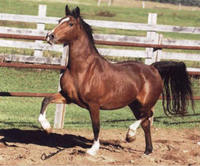 |
| It's important to properly warm up and cool down ito correctly condition your horses for competitions |
Cooling a horse off and allowing him to stretch out his neck and back muscles can help to prevent the build up of lactic acid in the muscles. Research shows that a high level of lactate eventually prohibits the muscle fibers from contracting, which in turn leads to fatigue, painful cramping and strains on ligaments and tendons. Cooling down will also allow the horse’s heart and respiration rate to return to normal. Relaxing and walking the horse at the end of any ride should become a habit that is a pleasant, positive experience, preparing him for the transition from exercise to rest. It should also benefits the rider as well.
Always divide your ride into three elements – warm up, activity and cool down. And don’t forget to warm up yourself too! This can be done unmounted if necessary and will help to increase blood flow, circulation and flexibility. Simple stretches, bends and walking or gentle jogging can all help to make you a more effective rider.
The older a horse is, the more warm up and cool down will be necessary, and although walking on a long loose rein for 20 to 25 minutes may seem a little dull at times it will be appreciated and is ultimately much better than paying for a veterinary surgeon to visit because your horse has gone lame.
During the cold winter months, you should increase your warm-up time by five to ten minutes as the colder temperatures mean it takes longer for muscles to adapt. All horses vary in how much warm up is needed in order for them to perform well, and you can learn a lot by visiting shows and observing the routines developed by top riders. Warming up for competitions can be somewhat experimental at first, as you will need to discover the best way to prepare your horse to perform at his best in the arena.
Warm up and cool down can be done at varying paces of walk, but allow the horse periods when he stretches deep and down as if he is looking for the contact. Walk in large circles, serpentines and around the edge of the arena in different directions. The aim is to warm up and cool down - not to allow your horse to nod off to sleep! Suppling exercises, including circles and neck bends can also be performed during the cool down period. Gentle leg yielding, while working the horse ’long and low,’ is an effective way to stretch the back and hindquarters.
No comments:
Post a Comment